What Are The Cheapest Countries In Latin America For Tourists In 2025?
Disclaimer: Some links on this page may be affiliate links. If you purchase anything through them, I will receive a small commission at no extra cost to you! Further details in the Privacy Policy.
The cheapest countries in Latin America for tourists in 2025 are Bolivia, Nicaragua, Guatemala, Honduras and Peru. Although Colombia, Paraguay and El Salvador aren’t far behind.
The most expensive are Belize, Costa Rica, Chile and Uruguay. Argentina has recently gone from being one of the cheapest to fairly expensive, as the Blue Dollar exchange rate which tourists used to double their spending power has collapsed in comparison with the official rate.
Let’s look at these five countries in detail and explain how much they cost. I tracked all spending from my own travels through Latin America and have a good idea of how much budget accommodation, transport, food/drink and activities cost.
I will explain a little on what there is to do in each place.
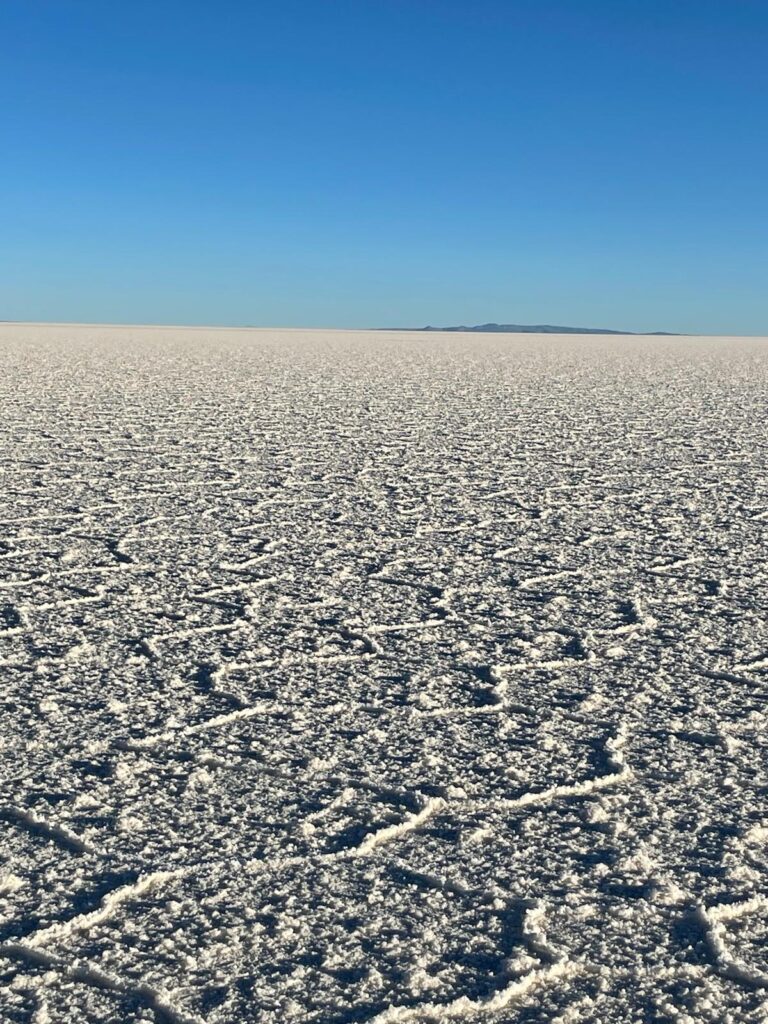
1) Bolivia
Bolivia is arguably the cheapest country in Latin America when it comes to everyday costs. Unfortunately US visitors may not agree due to the US$160 visa fee, although if you stay for at least a couple of weeks, the fee will feel more like an investment compared to most other countries where you will be spending more than that in living costs.
Us Brits, EU citizens, Canadians, South Americans (excluding those form Guyana/Suriname), Australians and New Zealanders have visa-free access to Bolivia.
Accommodation Costs
Hostels in Bolivia start from around £4/US$5 per night. These are mostly in de facto capital La Paz, although it doesn’t cost much more to find a room in any part of the country. Private rooms start from just £5/US$6 per night. You can find rooms for this price in popular locations such as Copacabana, La Paz and Isla de la Luna.
In tourist hotspot Uyuni, rooms cost a little more starting from £10/US$12 for a hostel dorm bed and £12/$14 for a private room. If there is more than one person, it is cheaper to stay in a private room.
The quality isn’t bad either. Obviously the cheapest rooms are basic, but they aren’t horrible. From my experience travelling across the world, the worst cheap rooms come in expensive countries. USA and Saudi Arabia, I’m looking at you… That being said, be sure to check reviews if booking online, and look at the rooms first if booking in person. Otherwise you could still find a house of horrors.
Having stayed in maybe 150+ hostels over the years, I’d say at least 95% of them range from okay to excellent. So don’t feel that cheap (necessarily) means bad.
Food And Drink
It’s honestly harder to find expensive restaurants in Bolivia than it is to grab a cheap bite to eat.
A meal here will cost you around £2/US$3. You can easily eat for £5/US$6 per day and may even have change left over.
Cheese, eggs, rice and meat are popular in Bolivian cuisine.
Transport
Take a minivan from Copacabana on the Peru border to La Paz for just over £3/US$4.
A long-distance overnight bus journey on a fairly well-maintained bus will cost around £15-18 (US$19-23). This will take you from La Paz to popular transit destinations or tourist spots including Santa Cruz and Uyuni. Transport is very cheap in Bolivia.
A taxi trip in an average Bolivian city is around £3/US$4. A bus from the airport in La Paz to the city centre is just £0.50/US$1.
I took a long distance bus from Salta (Argentina) to Uyuni, and the 7-hour journey from the border town of Villazon cost just £4 (US$5).
Activities
Even activities in Bolivia are super affordable. The main one you will most likely be doing is a tour of Uyuni Salt Flats. This costs around £28/US$36 which may seem high by Bolivian standards, but is an absolute bargain since this is considered one of the best natural landscapes in the world. And believe me when I say it lives up to that billing. A truly spectacular place to visit.
Other popular things to do in Bolivia include watching Cholita’s wrestling in La Paz (£6/US$8), visiting the Witch’s Market (free) and visiting Valle de la Luna (£1/US$2).
I will say however that due to non-existent safety standards, tours in Bolivia can be unsafe at times.
What To Do In Bolivia
I’ve covered some of the most popular activities above. The Uyuni Salt Flats are absolutely spectacular and should be a must on any Bolivia (or indeed South America) itinerary. Cholita’s wresting is fun for 15 minutes. It’s unique and quirky, but still worth checking out once. Must admit the novelty did wear off for me after around 15 minutes however.
The Bolivian Amazon rainforest offers a far cheaper equivalent to Brazil. Isla del Sol on Lake Titicaca offers the opportunity to explore Inca culture, normally associated with neighbouring Peru, and cycling down “Death Road” is popular amongst adrenaline seekers.
This is one of the most underrated countries on earth.
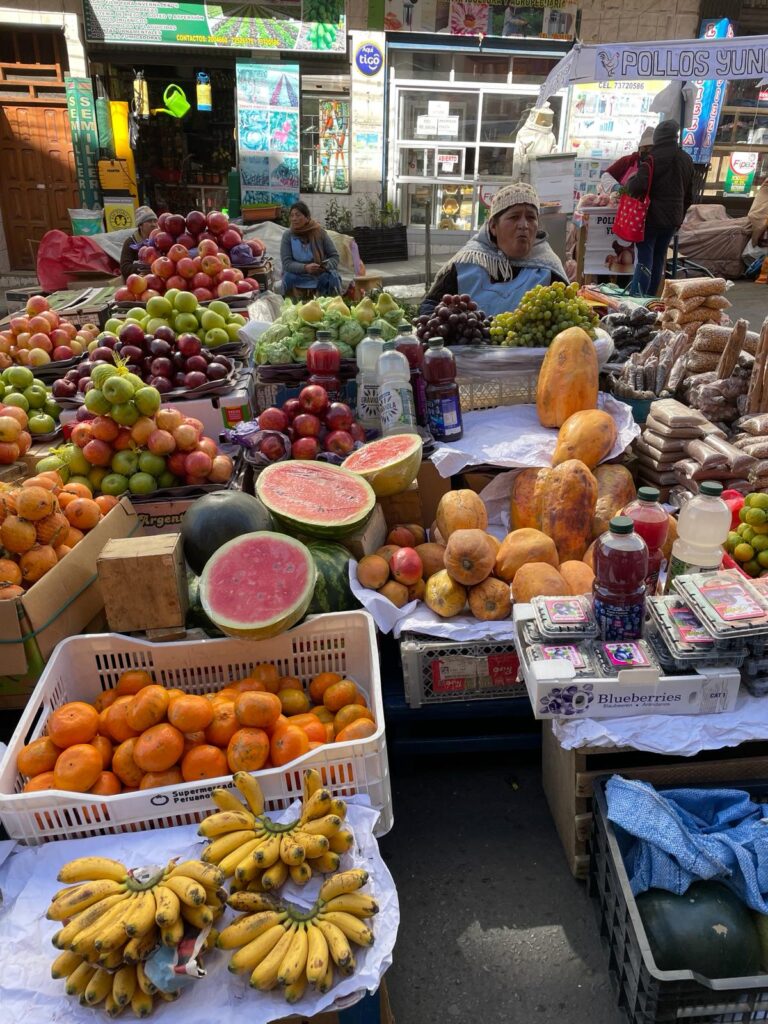
2) Nicaragua
One of the best countries in Central America, and one of my favourites in the world. Nicaragua is not just full of bucket list activities, it’s also one of the cheapest countries to visit in Latin America in 2025.
Accommodation Costs
As with all countries in this list, it’s super cheap to find a place to stay. Both hostel dorms and private rooms in Nicaragua start from £5/US$7 per night. And again, the quality of low cost accommodation isn’t necessarily bad. Places to stay for these ultra low prices can be found across all major tourist spots including Leon, Granada, Ometepe island and San Juan del Sur.
Food And Drink
Once again, food is very affordable in Nicaragua. The national dish is gallo pinto which consists of rice and beans, sometimes with other ingredients thrown in on top. This is very affordable and is eaten at all times of day: breakfast, lunch and dinner. Gallo pinto in Nicaragua costs around £2-3 (US$3-4) per meal. Even if it’s not your thing, you won’t have much difficulty finding a meal for under £5 (US$6) here.
You won’t have to search far and wide to grab a budget beverage in Nicaragua. It is common to find alcoholic or non-alcoholic drinks for around the £1 (US$1.25) mark here. That includes the refreshing local beer Toña, and many different flavours of fruit juice.
Transport
I’d say Nicaragua is probably the cheapest country I visited when it comes to transport. Chicken buses are king out here.
What’s a chicken bus? Well it’s usually a former school bus from the USA that has been converted on the cheap and now transports people between towns in Central American countries. This is what I spent on transport in Nicaragua (excluding my international bus to Leon from Honduras, and my buses from San Juan del Sur to Costa Rica)
| From | To | Cost | Method of transport |
|---|---|---|---|
| Leon | Granada | £3.47 (US$4.42) | Bus |
| Granada | Moyogalpa (Ometepe) | £5.72 (US$7.28) | Bus + ferry |
| Moyogalpa | Charco Verde | £0.39 (US$0.50) | Bus |
| Charco Verde | Moyogalpa | £0.39 (US$0.50) | Bus |
| Moyogalpa | Granada | £3.96 (US$5.04) | Ferry + bus |
| Granada | Diriamba | £1.06 (US$1.35) | Bus |
| Diriamba | San Juan del Sur | £2.57 (US$3.27) | Bus |
| Total cost | £17.56 (US$22.36) |
Activities
Nicaragua is full of bucket list activities and considering how incredible some of them are, it’s remarkable that none of them will break the bank. At the higher end you’re looking at around £25/US$30 for something like volcano boarding, which is pretty fair since this is the only country in the world where you can do such a thing. At the lower end, something like visiting the stunning Charco Verde ecological reserve will only set you back £3.93/US$5. Your cash will stretch far in Nicaragua.
What To Do In Nicaragua
Gosh, where do we start… This country is absolutely wonderful. But to summarise: volcano boarding down Cerro Negro Volcano near Leon, peering into Volcan Masaya near Granada (where you can see lava), staying in a treehouse in the middle of the jungle, immersing yourself in nature at Charco Verde, diving in the Corn Islands, hiking up volcanos on Ometepe, surfing and sunsets at San Juan del Sur…
Okay, this list is already long, but you get the idea. Maybe one day I’ll make a post on the top things to do in Nicaragua. Because there are so many. In the meantime I’ve created an itinerary on what to do in Nicaragua, so check it out to hopefully help shape your own trip!
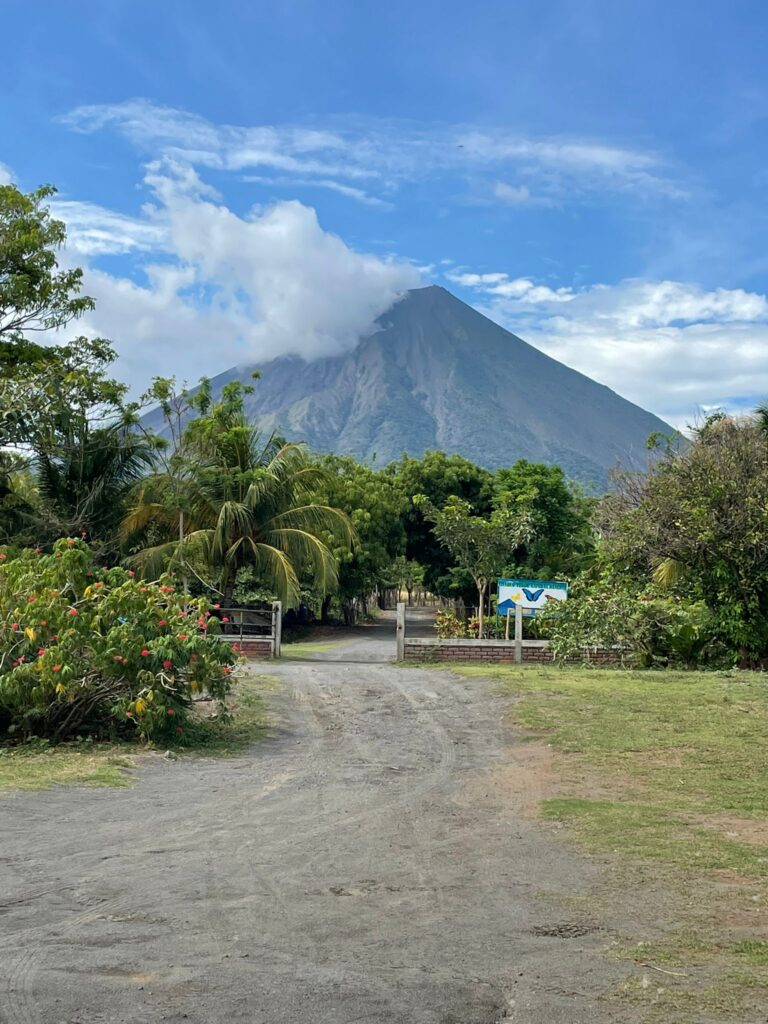
3) Guatemala
The best country in Central America for adventure. Guatemala is another nation that attracts budget backpackers in abundance. I should know because I was one! And many following the so-called “gringo trail” will slow down here to save a bit of cash, which wouldn’t be the case in the expensive neighbouring country of Belize.
Accommodation Costs
A night in Guatemala will start from £6 (US$8) for a dorm bed. Capital Guatemala City and Quetzaltenango (Xela), most famous for being a hub of cheap Spanish schools, are the places with the cheapest sleep spots. As with Nicaragua, the cheapest private rooms are on a par with the cheapest dorm beds, making Guatemala even cheaper if you travel as a couple or with friends/family.
Food And Drink
Guatemala has a lot in common with Nicaragua. And cheap bites are one of the many similarities they have. Grab a meal here for less than £4 (US$5). Street food can be obtained for a quarter of this price. Guatemalans love their cheap street eats, and you will find many options all over the country. A lot of Guatemalan food is similar to that found across the border in Mexico, with tacos and tortillas making their way down south, alongside some more traditionally Guatemalan options.
Transport
The one area where Guatemala differs from Nicaragua on price is transport. Sure, you can string together a bunch of chicken bus journeys for a similar cost. But you’re better off taking the tourist shuttles as the safety situation in Guatemala isn’t quite as stable as that in Nicaragua.
Tourist shuttles tend to cost anything from £15-30 (US$19-39) for a long distance journey. It’s also worth noting that where most tourist spots in Nicaragua are closely bunched together, it will take 10+ hours to get between Tikal/the Belize border to Antigua or Lake Atitlan in Guatemala.
Activities
Activities in Guatemala are also slightly higher than those in Nicaragua. On average you’re looking at £16-40 (US$20-51) to take a tour and see the best of what Guatemala has to offer including stunning natural monument Semuc Champey and the Mayan ruins of Tikal. Not least the famous Acatenango tour, speaking of which…
What To Do In Guatemala
Hike up Volcan Acatenango. You can literally see a volcano erupting (Volcan de Fuego) from the side of the volcano, and that’s the coolest thing ever. I paid £35.27 (US$44.90) for a tour and it was truly bucket list stuff.
Elsewhere in the country, Semuc Champey is home to a beautiful natural wonder, Lake Atitlan has a lot going on, and Tikal is (in my opinion) the best Mayan ruin site out there.

4) Honduras
Sandwiched in between Guatemala and Nicaragua, it makes sense that Honduras is pretty similar in terms of cost. The three countries plus El Salvador make up the Central America-4 (CA-4), a free movement initiative similar to the EU’s Schengen arrangement, which makes travel between members very easy.
There are still passport checks for foreigners, although they’re pretty painless. However in 2025, us Brits now need a visa which wasn’t the case when I first came here in 2022.
But this post isn’t about passports, it’s about costs, so let’s take a look at Honduras. And then you can decide whether to add this country to your Central America backpacking itinerary.
Accommodation Costs
Admittedly accommodation costs here are a little higher than in Honduras’ neighbours. Rooms start from £7 (US$9) per night, with the cheapest rooms in areas tourists will most likely stop in purely for transit purposes. Namely La Ceiba and Tegucigalpa.
The main issue with Honduras is that it has a lot less accommodation than other countries on this list. The good news at least is that it is still very cheap as the small supply is matched by relatively small demand.
Food And Drink
The primary staple of Honduran cuisine is the baleada: a tortilla filled with cheese and beans (and sometimes a lot more). This popular street food will only cost around £1-3 (US$1.50-4) even in restaurants.
An average drink of juice or beer will cost a similar amount. You may have to pay an extra dollar or so per drink on the Bay Islands (Utila and Roatan being the main ones), but it’s still very cheap. Food and drink costs are generally fairly similar across the CA-4 countries.
Transport
Now this is one area where Honduras differs from its neighbours. The main reason for increased pricing is the ferry between La Ceiba and the Bay Islands. A return adult ticket to Roatan costs £28.57 (US$36) whereas return transport to Utila costs £46.08 (US$58.07).
For the inexperienced traveller, Honduras isn’t the wisest country to traverse by chicken bus. It does have a bit of a dubious safety reputation, and therefore travelling by tourist shuttle is advised.
The shuttles are more Western European than Honduran in terms of pricing however. Prices start from £59.52 (US$75) to get between popular Copan Ruinas and La Ceiba (the port city, used to get to the Bay Islands). Whereas shuttles from La Ceiba all the way down to Leon in Nicaragua cost £107.69 (US$136).
If you’re willing to take the adventurous route and travel by chicken bus, Honduras can be much cheaper to travel across. But the tourist shuttles will see a spike in your spending in an otherwise very cheap country.
Activities
The most popular attraction on mainland Honduras is Copan Ruinas. The Mayan ruin site costs £11.90 (US$15) to enter.
Other than this, most activities in Honduras revolve around water activities from the Bay Islands. Honduras is one of the world’s cheapest countries for diving starting at £20-25 (US$25-32) for a single dive. And the Open Water certification (for beginners) costs just £176 (US$221.78).
This may seem expensive compared to the average travel activity, but if you wish to become a certified diver, there are few cheaper places in the world to do this.
What To Do In Honduras
I’ve covered the main things already really. Visit Copan Ruinas to see the Mayan ruins and the macaws that live there, and head to the Bay Islands for some diving or snorkelling.
The main attraction I haven’t already covered is Lake Yojoa, a mountainous lake on the Honduran mainland.
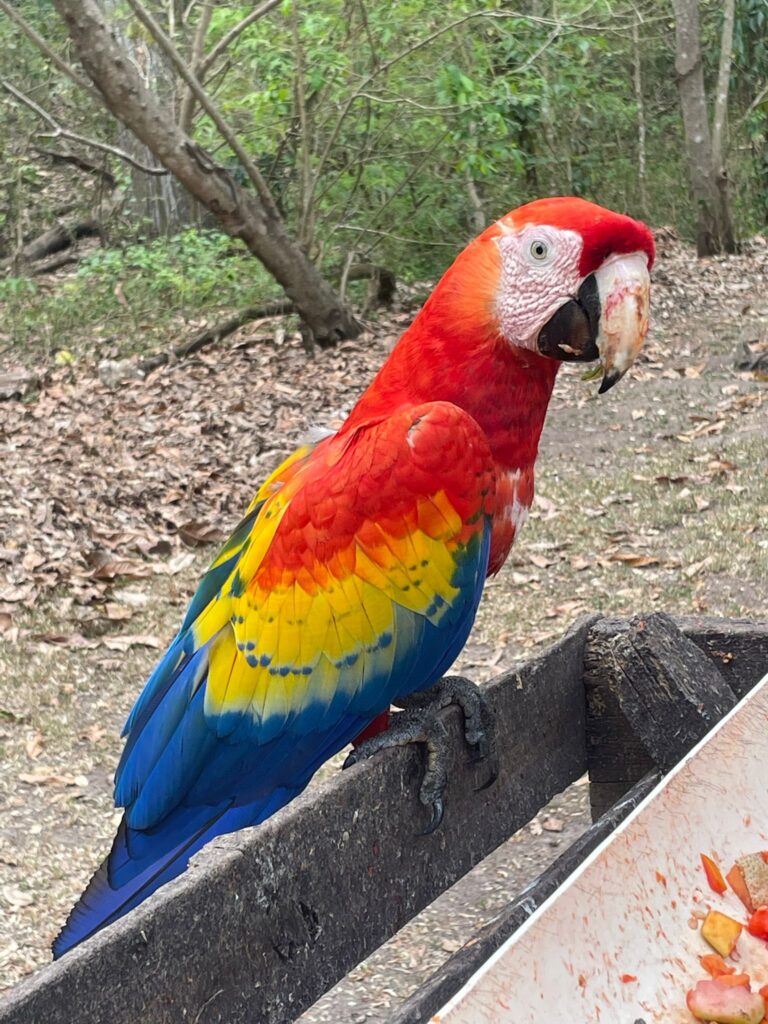
5) Peru
Dubai is awesome, therefore you’ve got to spend a lot of money to visit. If it was cheap, it just wouldn’t be good, right???
Wrong. Peru is an example of a country that is very cheap to visit, but also has a lot of awesome things to see and do on your South America trip. Let’s explore some of the costs below:
Accommodation Costs
Cheap country plus lots of tourist footfall equals very cheap accommodation. In fact, of the 72 countries I’ve been to at the time of writing, few were cheaper than Peru in terms of places to stay. Maybe India where I went backpacking in 2019, but that’s just about it.
You can get both dorm beds and private rooms for just £2 (US$3) per night in Peru. Huarez and Cusco have the majority of the rooms for these rock bottom prices, but it will only cost a couple of dollars more for places to stay in Arequipa, Lima, Puno and the Sacred Valley.
Food And Drink
Now Peru is the most expensive of the five countries on this list when it comes to food and drink, but when the bar set by the other countries is so low, “most expensive” still means pretty cheap! Aside from Bolivia, few other South American countries are as cheap as Peru for food and drink. Colombia is an obvious exception, Paraguay is also very cheap for eating.
Don’t expect to pay more than around £5 (US$6) for a meal in Peru, where the most popular food by far is ceviche, a seafood dish that can be found all over the country. Prices are a little higher in Cusco in particular, perhaps not surprising given the city’s reputation as Peru’s tourism capital.
Transport
Transport is one area where Peru will sting you harder than other countries on this list, although that’s not unreasonable given how large the country is. Peru is almost as big as the entirety of Western Europe, and bus journeys here are long. And even then, it is still pretty affordable. Let’s have a look at how much I spent on transport in Peru:
| From | To | Cost | Method of transport |
|---|---|---|---|
| Lima | Paracas | £13.05 (US$16.44) | Bus |
| Paracas | Huacachina | £5.48 (US$6.91) | Bus |
| Huacachina | Arequipa | £25.24 (US$31.80) | Bus |
| Arequipa | Cusco | £32.98 (US$41.56) | Bus |
| Cusco | Urubamba | £2.20 (US$2.77) | Minivan |
| Urubamba | Cusco | £3.95 (US$4.98) | Minivan |
| Total cost | £82.90 (US$104.46) |
Activities
Now this is the biggest expense when travelling in Peru. Not because activities are expensive, but because you’ll do so many of them!
The pinnacle is of course Machu Picchu, which you can visit in one of three ways. You can do either the Inca Trail or the Salkantay Trek, which involve around 5 days of walking. I did the Salkantay Trek and it was absolutely magical, would thoroughly recommend it to anyone. The third way is to take a train directly to Aguas Calientes, the small town at the base of the mountain. The Machu Picchu ticketing website lists the prices for entry:
- Machu Picchu entry fee: £32.60 (US$41.08)
- Return train from Ollantaytambo (cheapest and nearest stop) to Aguas Calientes: £111.10 (US$140)
- Return bus from Aguas Calientes to Machu Picchu: £19.05 (US$25)
Expensive right? It’s much cheaper taking a group tour with a guide along either the Salkantay or Inca Trail. This will cost just under £200 (US$252) for the Salkantay Trek, and upwards of £436 (US$550) for the Inca Trail. You can get cheaper tours in Cusco compared to anything you find online. But since this cost is spread over 4-5 days and includes everything (tour guide, meals and accommodation), it’s a pretty good deal. I paid £184.80 (US$232.87) to do the Salkantay Trek.
Outside of the big one, Peru has many other great activities for pretty low prices compared to what you’d expect in the USA or Western Europe. Here’s what I paid for other activities in Peru:
- Lima catacombs tour including guide: £3.22 (US$4.06)
- Islas Ballestas boat tour near Paracas: £10.72 (US$13.51)
- Colca Canyon day trip from Arequipa including return transport and a guide: £27.41 (US$34.54)
- Rainbow Mountain tour from Cusco including return transport and a guide: £16.85 (US$21.23)
- 2-day Sacred Valley entry ticket that includes entry to Ollantaytambo, Pisac, Chinchero and Moray: £15.35 (US$19.34)
I also did several “free” (tips-based) walking tours. You can choose how much to pay, but the average in Latin America is generally around £5-10 (US$6.30-12.60) per person. I did these in Lima, Arequipa and Cusco. Lima was “meh” but the other two were pretty awesome, and I’d highly recommend them.
What To Do In Peru
I’ve covered many of the main attractions above. I’ve also written a 3-week itinerary on what to do in Peru.
Machu Picchu of course (best combined with the Inca Trail or Salkantay Trek) is obviously the big one. Nature-rich Colca Canyon, the archeologically-fascinating Sacred Valley and stunning Rainbow Mountain are amongst the best of the rest. And desert oasis Huacachina is a great place to go sandboarding and enjoy amazing sunsets before seeing the night away with a few too many pisco sours.
Peru also has access to the Amazon Rainforest, you can spend time with indigenous people on Lake Titicaca, check out the mysterious Nazca lines… the list goes on really. Peru is a place where you can spend months without getting bored.
It’s a great South America starter country. Whilst also offering a lot for repeat visitors.
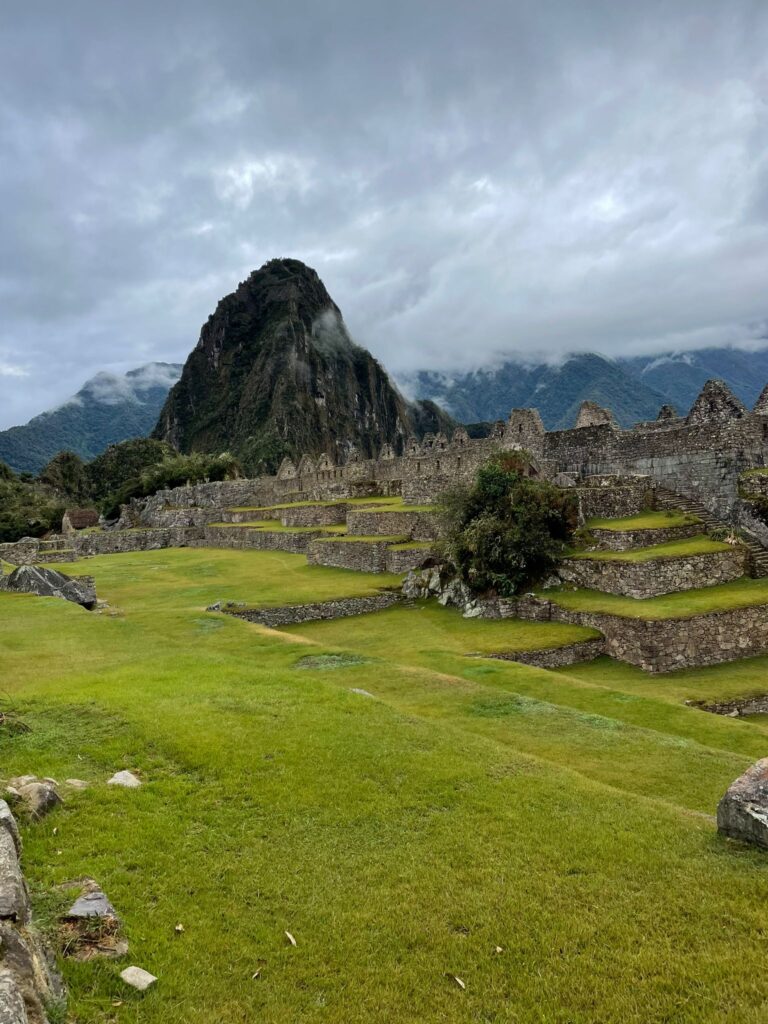
Are There Any Other Cheap Latin American Countries?
Yes! El Salvador narrowly missed out on a place on this list. It is similar to its CA-4 neighbours (Guatemala, Honduras and Nicaragua) in many ways, but using the dollar has made it a little more expensive.
Argentina would have been on this list had I written it in November 2023, but the volatile currency situation there has led to mass inflation, the collapse of the Blue Dollar in comparison with the official exchange rate, and the country costs over twice as much to visit as it did during my September 2022 visit.
Even since I last visited Argentina just two months before updating this post in January 2025, prices shot up drastically.
Colombia and Paraguay are the two other countries which could stake a strong claim to be on this list. Both are very cheap. Colombia just missed out because it does cost a fair bit to travel between cities in this giant country. Paraguay is more expensive than Bolivia who it shares a northern border with, but it’s much cheaper than fellow neighbours Argentina and Brazil.
Ecuador is the last country which could perhaps feel a little aggrieved to miss out. A cheap country overall, although the Galapagos Islands are much more expensive, and Ecuador uses the dollar which edges costs up a little. Although Ecuador isn’t very safe at the moment, so perhaps it’s one to avoid regardless.
You can read more here about how Central and South American countries compare in terms of costs.
What Are The Most Expensive Latin American Countries?
Costa Rica, Uruguay, Belize, Chile and Venezuela are the most expensive Latin American countries in 2025. Panama is just behind, whilst Argentina has gone from one of the cheapest to fairly expensive in the space of a few months.
Although at this time, the situation there is pretty unstable and they could go either way (become much cheaper or more expensive) at short notice.
Brazil has become a little more affordable in 2025 as the real weakened significantly, which means it no longer makes this list.
Hyperinflation is the primary reason why Venezuela is one of the region’s more expensive countries. When I went in 2025, I saw basic supermarket items such as a bag of nuts or (admittedly large) packet of crisps costing a whopping US$30.
